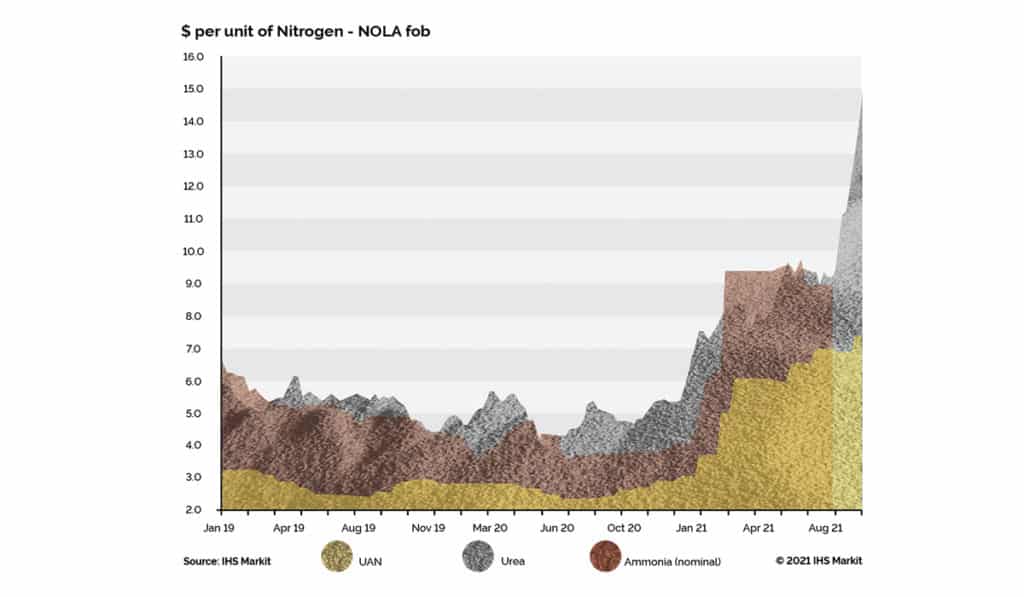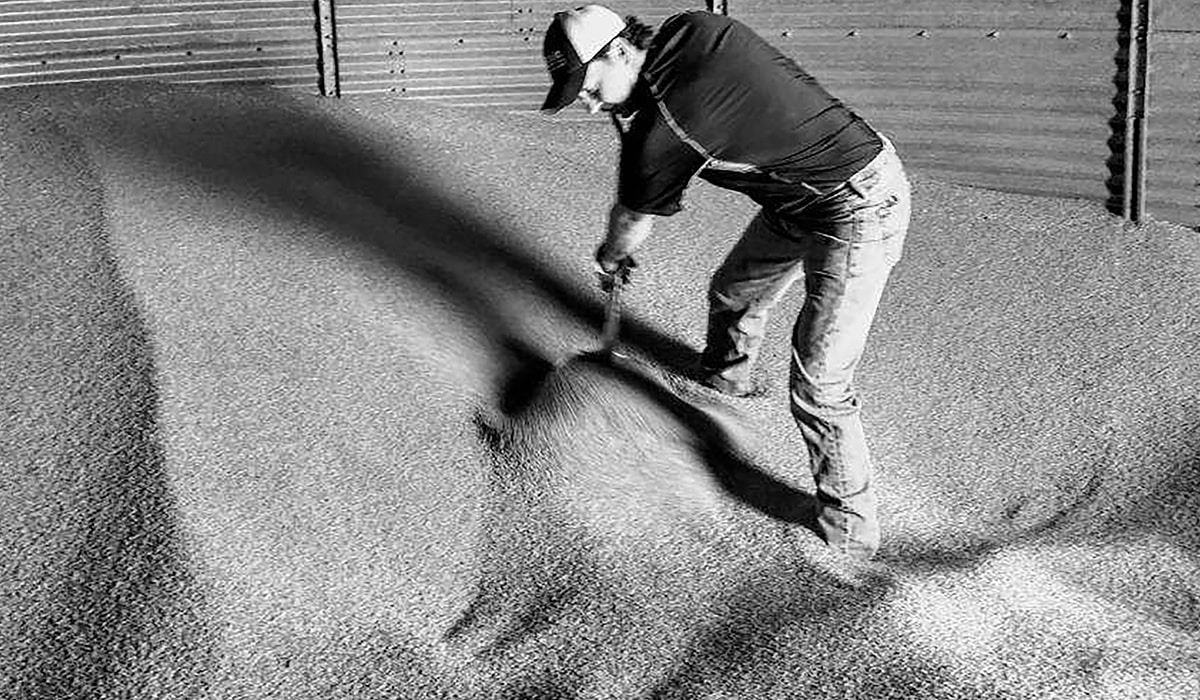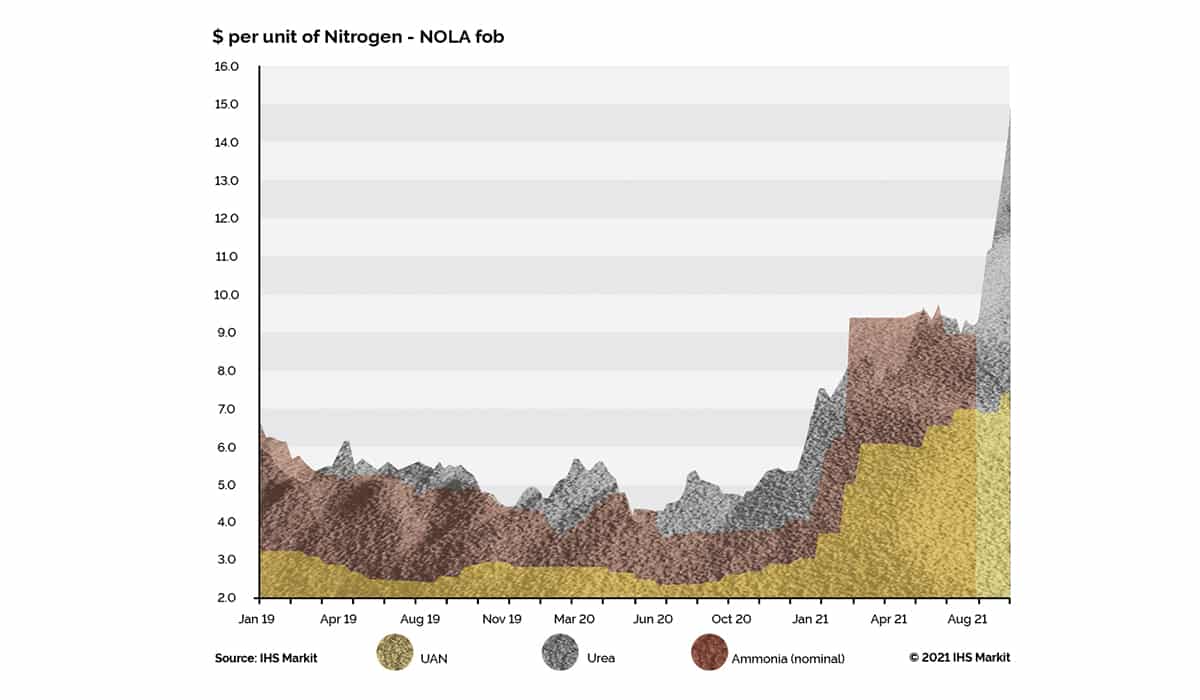
This article is featured in the Spring 2022 issue of LAND magazine. Click here to find out more.
Market trends in farming and ranching serve as a fundamental basis of knowledge feeding or fertilizing, if you will, several of Montana’s industries. As a certified crop advisor, agronomist, and a real estate broker for farms and ranches, I have been keeping tabs on the surging fertilizer costs causing strain on farmers, inflating prices of groceries and food, and pushing real estate prices for ag land higher than they have been for years.
Feeling the Pinch
Farmers feel the strain from rising fertilizer costs and grapple with cutting back application and cutting input costs. What has contributed to this spike in fertilizer prices? Extreme weather has been a major contributing factor. Hurricane Ida blew through and caused production plants in the US to shut down. The unruly weather prevented the product from being moved in or out of the gulf. Other components include sanctions and rising energy costs in Europe and China. Natural gas is the main feedstock for most nitrogen fertilizers, and because of skyrocketing natural gas prices, companies have had to close or cut significant rates of production.
Simultaneously, prices for corn and soybeans are high right now generating an eagerness among farmers to take advantage of those prices. However, corn is expensive to raise and requires high input costs. Thus, demand for fertilizer is apparent as farmers look to increase yields.
Fertilizer cost is one of the biggest drivers behind global food inflation right now. As farmers contend with high input costs, they can cut back fertilizer application or shift to cheaper crops that require fewer input costs such as soybeans, lentils, and peas. Switching from raising corn crops or not planting as many acres means less corn that is widely used in foods consumed in many households.

Agricultural Real Estate
USDA’s National Agricultural Statistics Services indicate the value of agricultural land is increasing at a rate not seen in nearly a decade. The US cropland value averaged $4,420 per acre, an increase of seven point eight percent from last year. In Montana, farm real estate values increased by one point six percent or $930 per acre. In the states with volumes of high-value crops such as wine grapes or tree nuts in California, values increased by $10,900 per acre! These kinds of increases impact local real estate markets and vary by state. Inventory for transitional land in rural areas is low; otherwise, sales volume would demonstrate a sharp increase in line with the increase of land value. The demand has spurred the division of larger parcels into smaller 10- and 20-acre tracts. COVID continues to drive people out of the bigger cities and toward more secluded rural communities. I do not foresee this changing anytime soon because of the constant demand and lack of inventory. It is an amazing time to be a part of the land market. Farmers are glad to see the inflation of their assets with the increased value of cropland helping them attain loans or profit if selling. The rising land values offer an opportunity for farmers and ranchers to see their blood, sweat, and tears turn into lucrative equity. With another year of sustainable land values, farmers seeking to retire can do so and receive top dollar for their amassed estates. As a fellow rancher, I hold a deep appreciation for the people who give so much of themselves stewarding our nation’s fields and producing our food. Contrary to the glamorous depiction from Hollywood, farming and ranching are often gritty, backbreaking work to stave off financial ruin. Farming and ranching include numerous elements that are beyond control. Often, selling a small portion of your farm or ranch can free up some much-needed operating capital.
As typical, farmers and ranchers are plowing ahead with the determined resiliency that has allowed them to overcome so many of these similar challenges before. There are some strategies for growers that didn’t get all their nitrogen applied in the fall. To maintain profitability, farmers can reduce rates, split applications, or apply most nitrogen as anhydrous ammonia. While examining your budget, look at hedging more grain. If prices do come down, you should get to your break-even levels pretty quickly. Farmers also continue to buy up crop insurance. As we face times of uncertainty, there is one thing that farmers and ranchers are accustomed to and that is having a lot of faith.

